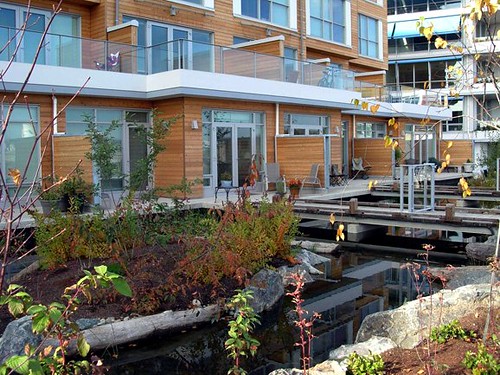Professor David Orr has been a long time scholar of sustainability, and is now putting thought into action. He has spearheaded “The Oberlin Project“, an ambitious endeavor to make Oberlin, OH a self-sustaining community: socially, economically, and environmentally.
“Gown towns” are those small towns that have a college or university that tends to dominate the social and economic activity of the town. Small towns like Oberlin OH or Miami OH (Miami University of Ohio) can seem to be more of a service station to the faculty, staff and students of the academic institution than a stand-alone community, especially for those citizens who live and go to school there. Even larger cities, such as Knoxville TN, can be dominated by their universities sometimes (especially during football season… go Vols!). For these towns, it might be quite a challenge to build lasting business and arts districts when at least half of the population is seasonal and transient (i.e., the students). However, many of these towns are close enough to a major city to allow them to be dependent upon them for certain services and sectors; Oberlin (just 40 miles from Cleveland) is no exception.
Now here’s my humble opinion: Houghton/Hancock MI might superficially seem like yet another “gown town”, ripe for new ideas about self-sufficiency and sustainability. However, I’d argue that we are quite different than the gown towns of Oberlin and Miami in one very critical respect: we are over 200 miles from the nearest city (Green Bay, WI). Our remoteness may have forced upon us a self-sufficiency that is rare among gown towns. We are probably not any more or less sustainable than these other towns (and so we have a lot to learn from The Oberlin Project), but I’d argue that at least we’ve got most of the components we need to get there.
